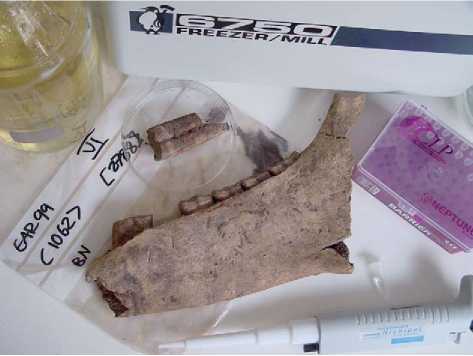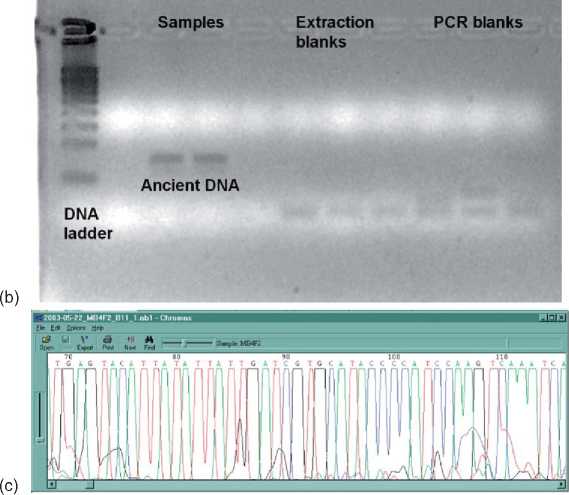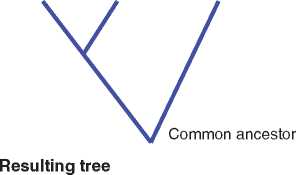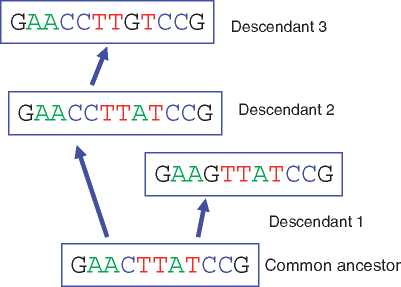The same section of DNA sequence is collected from many living individuals. These are compared to each other, and their relatedness is scored using various statistical analysis methods. These methods search for sequence similarities that allow organisms to be grouped together into subsets of the data. These patterns are usually explored using phylogenetic trees or median joining networks but the basis of the analysis is the same sequence data. Trees and networks are methods for the visual representation of the mathematically determined pattern of relatedness within the data set (Figure 4). These methods are based on theoretical models of evolution and they differ in the complexity of the models they express. The basis of all of them is that relatedness can be measured by the accumulation of mutations in sequence data. Mutations are changes in genetic information. They can accumulate in nonessential regions of DNA and are thought to record an overall history of the evolutionary life of a
(a)


Figure 3 How to get ancient DNA: (a) bones and teeth are sub-sampled and ground to a fine powder in liquid nitrogen; (b) as agarose gel showing faint bands of aDNA from the above sample; (c) a chromatogram of the aDNA sequence obtained from the sample.
Genome. We believe that they occur at a predictable speed (though this is recently being challenged) and accumulate unidirectionally over time (in mtDNA at least). Different parts of the genome mutate at different speeds; this is why some parts of the genome are better for studying the evolution of species and others the evolution of populations.
Approximate ages for the patterns of relatedness can be estimated based on models of the molecular clock. The molecular clock is an estimation of the rate that spontaneous errors in DNA replication (mutations) occur over time. Initially it was thought that this was constant across species and genetic loci; however, molecular clock users now are developing statistical approaches including maximum likelihood techniques and Bayesian modeling to formulate a ‘relaxed molecular clock’ which is proving to be more accurate. The same section of DNA from ancient individuals is then added to the analysis and this gives patterns in the living data real-time depth as these can give a terminus post quern to the groupings within which they fall.
The dating of divergence events based on the molecular clock and more importantly ancient DNA allow the molecular data to be compared with archaeological data (patterns in material culture, settlement and migration, the occurrence of archaeo-botanical remains of cereals during the spread of agriculture into Europe from the Fertile Crescent, etc.) and other data (e. g., palaeoenvironmental data) that can then begin to build up a picture which can be used to construct an archaeological narrative.
Descendant 3 Descendant 2 Descendant 1

GaacctTgTccg Mutation in descendant 3 GAaCCTtATCCG Insertion in descendant 2 GAAG—TTATCCG Mutation in descendant 1 GAAC-TTATCCG Common ancestor
Aligned sequences

Figure 4 Phylogenetic trees are a visual representation of the relatedness of individuals through time.




 World History
World History









